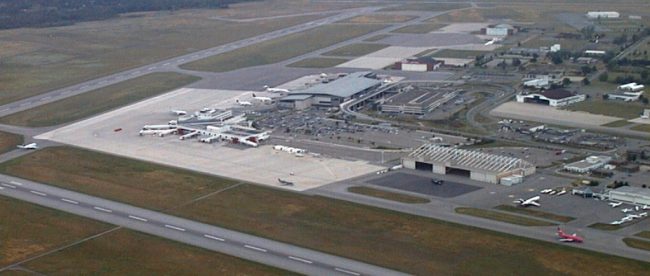Why Ottawa’s Airport is Called YOW

Since 1927, Canada’s capital, Ottawa, has been serviced by an airport now known as Ottawa Macdonald–Cartier International Airport. Like all other airports, Macdonald–Cartier International has an International Air Transport Association (IATA) code which is used by those in the air travel world to quickly identify it. And like other airports, Macdonald–Cartier International’s IATA code — at first glance, at least — doesn’t seem to match its name. If you’re flying into that airport, you’re flying into YOW.
The true story behind that IATA code isn’t all that interesting, but the title promises an explanation, so let’s get that out of the way. The “OW” part comes from “Ottawa,” which is self-explanatory. The preceding “Y” is for Canada, even though there is no “Y” in the word “Canada”. Before the IATA system spread widely, Canada had two-letter codes for each of its airports previously, and instead of coming up with all-new three-letter codes, it just added a “Y” in front of the existing ones. (According to Air Canada, “Y” was chosen to show that the airport was co-located with a weather reporting station; that is, the “Y” is short for “yes, we monitor the weather here, too.”)
Okay, so that’s the real explanation. But YOW fits Macdonald–Cartier International quite well — because of what happened in 1959.
Until the mid-1950s, the Ottawa airfield — then called the Uplands Aerodrome — was mostly used for military and postal uses. But as civilian air travel became increasingly popular, that changed. Uplands wasn’t able to handle the number of passengers that hoped to come through its gates, and in 1957, the Canadian government began construction on a massive expansion project to meet that need.
The new Uplands terminal was supposed to open in August of 1959, with all the pomp and circumstance one would expect after a major public works project opened its doors. Part of the opening ceremonies included an airshow by a U.S. supersonic jet, the Lockheed F-104 Starfighter. The F-104 was supposed to do some aerial tricks, but a Canadian official made a last-minute call and asked for something special — a supersonic flyby. And, as Time magazine reported, it turned out disastrously:
Answering an official’s request to see him buzz the field, the pilot swung the Starfighter out over the city in an arc, then leveled and came in low and flat. Like a bullet, he was gone. And so was the new terminal. Only splinters were left of more than $10,000 worth of glass; the whole north wall was smashed; tiles fell from the ceiling, and insulating material poured to the floor. Door frames, window frames, and even structural beams were twisted.
The shockwave did $500,000 worth of damages and delayed the opening of the new terminal until June 30th of the following year. Yow!
Bonus fact: The Ottawa supersonic flyby was a mess — but it wasn’t unique. In 2012, a pair of Brazilian jets buzzed the country’s Supreme Court building as part of a flag changing ceremony. As seen in this video, the jets shattered the glass of the Court building, causing tens of thousands of dollars in damages.
From the Archives: Indiana Jones and the Sonic of Boom: How Indiana Jones regularly breaks the sound barrier. (This is a really short Now I Know, one of the first I wrote.)
